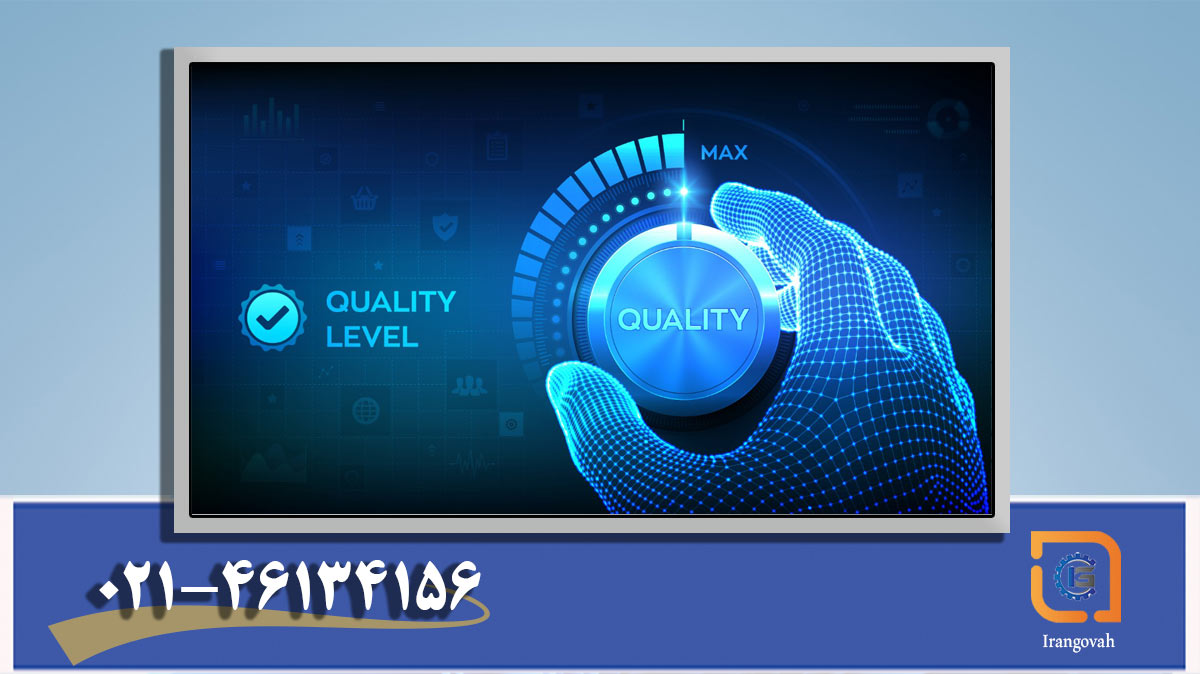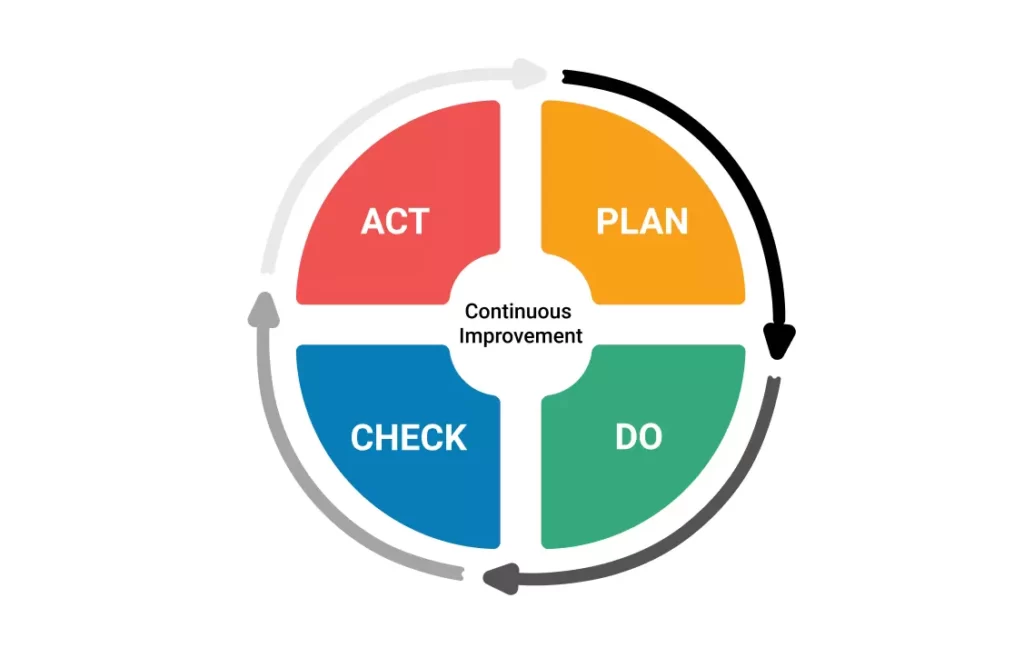What is the difference between standards and quality? Standards refer to guidelines and specifications that set the minimum requirements for a system, service, or product to ensure its efficiency and safety. On the other hand, quality refers to the overall superiority, fitness for purpose, and the degree of satisfaction that a product or service provides to its users.

- The Role of Standards in Organizations
- Application of Standards in Manufacturing Organizations
- Definition and Concept of Standard
- Application of Standards
- Adapting Standards to New Technologies
- Types of Standards
- Benefits of Using Standards
- Six Key Advantages of Standards:
- Definition and Concept of Quality
- ISO 8402's Definition of Quality
- Role of ISO 9000 in Defining Quality
- Difference Between Standards and Quality
- Relationship Between Standards and Quality
- Conclusion: Distinguishing Between Standard and Quality
- Frequently Asked Questions
The Role of Standards in Organizations
Standards help organizations meet stakeholder expectations by providing a vision, understanding, procedures, and a common vocabulary. These standards offer a basis for objective and reliable communication and business conduct for organizations and consumers by providing precise descriptions and terminologies.
Application of Standards in Manufacturing Organizations
Organizations, particularly manufacturing units, use standards to:
- Satisfy customers’ quality needs,
- Ensure the safety of products and services,
- Comply with regulations,
- Achieve environmental goals,
- Protect products against climatic conditions or other adverse situations, and
- Ensure the definition and control of internal processes.
Definition and Concept of Standard
What is a standard? A standard is a set of prescribed rules, conditions, or requirements used in terms of terminology definitions, component classification, material specifications, performance, or operations. It determines procedures or quantitative and qualitative measurements in describing materials, products, systems, services, or performances.
Application of Standards
Standards are voluntary documents that specify procedures and guidelines to ensure the safety, compatibility, and reliability of products, services, and systems. These standards cover various topics, which can include consumer products, the environment, construction, energy, water services, and many others.
Adapting Standards to New Technologies
To ensure alignment with advancements and developments in technology, standards are regularly reviewed by technical committees and the International Organization for Standardization (ISO).
Types of Standards
There are three categories of standards:
- International Standards These are developed by organizations like ISO, IEC, and ITU and are designed for national use by countries. The Iranian Standards Organization also welcomes the development and adoption of international standards.
- Regional Standards These are prepared and compiled by specific regions, such as the European Union (EN standards).
- National Standards National standards are developed by national standard bodies, like the Iranian Standards Organization, or other reputable entities. Standards developed under the name of the Iranian Standards Organization may be created in Iran or based on international and other standards.
Benefits of Using Standards
Standards symbolize the provision of better value for everyone. They ensure the quality and stability of products and services, giving businesses and consumers greater confidence. Standards also contribute to the economy, improve health and safety, protect natural resources, and enhance the quality of life.
Six Key Advantages of Standards:
- Increased Confidence: Businesses and consumers can be assured that products and services are safe, reliable, and fit for purpose.
- Boosting Innovation: Standards serve as a foundation for new ideas and can adapt to global changes.
- Competitive Advantage for Products: Products complying with Iranian standards offer added value to consumers.
- Reducing Barriers to International Trade: Standards facilitate global sales and utilization of products.
- Reducing Bureaucracy: Standards aid in harmonizing regulations and reducing business costs.
- Enhancing Business Prosperity: Standards simplify commercial transactions and reduce risk.
Definition and Concept of Quality
General Concept of Quality
Quality can be defined as “performance according to expectations” and “suitability for use.” A product or service is considered of good quality if it meets customer needs in terms of performance, durability, appearance, and intended purpose.
International Quality Standards
International quality standards include:
- ISO 8402: Quality definitions
- ISO 9000: Quality management and quality assurance standards
- ISO 9001: Quality systems – Model for quality assurance in design, production, installation, and servicing
- ISO 9002: Quality systems – Model for quality assurance in production and installation
- ISO 9003: Quality systems – Model for quality assurance in final inspection and testing
- ISO 9004: Quality management and quality system elements – Guidelines
ISO 8402’s Definition of Quality
ISO 8402 defines quality as “the totality of features and characteristics of a product or service that bear on its ability to satisfy stated or implied needs.” This standard further elaborates on quality with notes, clarifying that quality is not used solely to express a degree of excellence.
Role of ISO 9000 in Defining Quality
ISO 9000 addresses the distinctions and interrelationships between the core concepts of quality and provides guidelines for the selection and use of the ISO 9000 series standards regarding quality systems. Together with ISO 9004, this standard offers guidance on quality management for organizations. Specific discussions on quality in contractual matters are also included, where quality aspects are expressed to aid in selecting suitable terms.
Difference Between Standards and Quality
Standards: Specifications and Guidelines
- Specifications: Standards comprise predefined specifications, guidelines, and requirements that set the minimum criteria for the conformity of products, services, or processes. These criteria can include safety, efficiency, dimensions, and other aspects.
- External Guidelines: Standards are often created by international bodies like ISO or industry associations and are designed to establish uniformity and stability across various industries.
- Focus on Conformity: The primary aim of standards is to establish a baseline for conformity and to comply with specific regulations.
Quality: Excellence and Satisfaction
- Excellence and Satisfaction: Quality is a broader and more subjective concept that includes overall superiority, fitness for purpose, and the satisfaction that products or services provide to users or customers.
- Internal and External Focus: Quality focuses both on meeting external standards such as ISO 9001 and on delivering products and services that meet customer needs and expectations.
- Continuous Improvement: Quality management emphasizes continuous improvement and includes processes, methods, and principles designed to enhance quality and customer satisfaction.
Relationship Between Standards and Quality
Defining the Bilateral Relationship
- The relationship between standards and quality is like a two-way street. Standards define the path and essential requirements for conformity, while quality ensures that traversing this path is done in the best possible way.
Role of Standards in Creating a Quality System
- Standards like ISO 9001 lay the groundwork for quality management systems. Compliance with these standards ensures that organizations have robust processes for consistent quality delivery. However, mere adherence to standards does not guarantee superior quality.
Impact of Quality Management on Excellence
- Quality management, encompassing a set of principles, methods, and managerial practices, is the driving force in achieving excellence. Its goal is continuous improvement, identifying and rectifying problems, and increasing customer satisfaction. Quality management works alongside standards to ensure that products or services not only comply with specified standards but also align with the goal of customer excellence.
Conclusion: Distinguishing Between Standard and Quality
Ultimately, the distinction between standards and quality in the realm of ISO certification and quality management is crucial. Standards provide a framework for conformity, while quality focuses on exceeding customer expectations and fostering a culture of excellence. Effective understanding and coordination of these two elements are vital for organizations to continue their role in enhancing quality and complying with standards.

To obtain ISO certificates, you can contact Iran Govah through WhatsApp.
Frequently Asked Questions
What is the Difference Between Standards and Quality?
Definition of Standard: A standard refers to guidelines and specifications that define the minimum requirements of a system, service, or product to ensure its efficiency and safety.
Definition of Quality: Quality indicates overall superiority, fitness for purpose, and the level of satisfaction that a product or service provides to its users.
What is the Concept of a Standard?
A standard consists of a set of rules, conditions, or requirements used in terms of definitions of terms, classification of components, material specifications, performance and operations, establishing procedures, and quantitative and qualitative measurement in describing materials, products, systems, services, or performances.
What is the Concept of Quality?
Quality means “performance based on expectations” and “suitability for intended functions.” The quality of a product or service is measured in terms of its performance, durability, appearance, and application/purpose, as well as how well it meets customer needs.
What is the Relationship Between Standards and Quality?
The relationship between standards and quality is like a two-way street. Standards define the path and essential requirements for ensuring conformity, while quality ensures that the journey along this path is not only compliant but also excellently executed.


